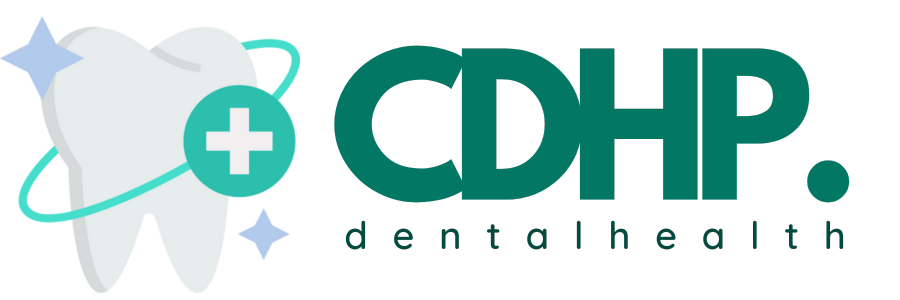Primary dental insurance is far less complicated than health insurance and has the purpose of helping you reduce dental prevention and treatment costs. You can choose between several insurance policy plans offering dental care services costing differently. The crucial thing to check before buying one – Is dental insurance worth it?
Table of Contents
The answer to this dilemma depends on your dental issues and financial possibilities. Carefully review all insurance aspects and compare them with your needs before choosing the best plan to fulfill all or most of your needs.
Dental Insurance Policies Types
You can choose among various dental insurance policy plans depending on what services they cover. However, you can recognize two primary types involving several plans.
Group (employee) insurance
You can get this insurance as a part of the benefits package at your company. An employer usually partially covers expenses while the rest of the fees get deducted from your salary.
You can recognize several group insurance models based on the services they cover, typically classified into three groups.
Preventive and diagnostic service group – This insurance type is based on prevention rather than treatment. It includes X-Rays and dental cleaning twice a year.
Basic dental repair service group – By dental insurance classification, this service package includes tooth filling when needed.
Major dental repair service group – This insurance includes bridges, dental crowns, partial and complete dentures, root canal treatment, dental implants, orthodontic procedures, and surgery.
Be aware that most group insurances cover only preventive and diagnostic services. Therefore, consider negotiating and adjusting your group dental insurance plan according to your needs and budget.
There is one more thing. Most insurance companies have their dentist network, and the plan sometimes requires you to choose an unknown dentist. It is often non-negotiable, so you should look for another option if you already have a trusted dentist.
Individual insurance
If you are unhappy with your company’s dental insurance, self-employed, or a retiree, you can enroll in an individual insurance policy. It is more expensive and less flexible than group insurance, but you can choose the plan according to the coverage you need.
Carefully review the insurance’s dentist network before the final decision and check for possible discounts. Always check the waiting period for some basic and major dental services, especially if you need some in the near future.
Is Dental Insurance Worth It?
You can purchase a dental insurance plan anytime if you don’t already have it. Individual insurance typically costs $15 to $50, while more expensive indemnity plans cost $81.5 per month. Family plan fees range from $50 to $150 monthly.
Dental services coverage varies from plan to plan. For instance, you can count on the following:
- 100% coverage for preventive services like fluoride treatment for kids, cleanings, exams, and X-rays
- 80% to 100% coverage for basic services like fillings, root canals, and non-surgical extractions
- 50% to 80% coverage for major restorative services like dentures, crowns, inlays/onlays, and bridges
All things considered, dental insurance is worth paying since monthly fees allow you to avoid paying dentist bills at once when needed. However, you should be careful and decide on time what services you need before buying the insurance.
Choosing the Best Dental Insurance Plan
Insurance companies provide a variety of insurance plans. Familiarize yourself with the offer and limitations of the proposed offer before deciding which one is the right for you.
Table or schedule of allowance plans – It means that insurance covers a set amount for each dental procedure regardless of its actual price. In other words, you must pay a part when the dental service costs more than the covered amount.
Point of service plans – This plan enables you to cooperate with your dentist. However, you will pay less for dental services if you go to a dentist who works within the network.
Preferred provider organizations – This insurance plan is more expensive than the previous one but provides more flexibility when choosing a dentist. Even though the insurer has a particular network of dentists, you can pick out treatments at your preferred dentist despite being out of the network.
Capitation plans (HMO) – This option includes dentists who offer primary dental care. They accept an agreed amount of money for each person enrolled in the plan instead of the actual treatment price, regardless of whether the service has been performed or not.
Indemnity plans – They allow you to a dentist of your choice because there is no network. Insurance pays a percentage of charges for dental services provided, better known as usual customary and reasonable fees. You also don’t need referrals for special dental services.
Direct reimbursement – This option includes a dentist of your choice and payment to the dental office. After receipt submission, insurance reimburses a percentage of the amount.
Exclusive provider organizations – This plan reimburses dental expenses only if you go to the dentists who are part of the network.
Dental Insurance Pros and Cons
Even with dental insurance, dental services can be expensive. That is why people hesitate to enroll in insurance plans. According to the American Dental Association, 89.7 % of children and 66.4% of adults in the USA have dental insurance.
Advantages and downsides of dental insurance |
|
| Pros | Cons |
| Typically, fully covered annual dental checkups | Requires additional payments |
| Early detection of potential problems | It doesn’t cover cosmetic treatments and surgeries |
| In-network discounts | Waiting periods for some services |
| Most people can qualify for this insurance type | Limitations to in-network providers |
| Low out-of-pocket expenses | Annual limits |
| Some premium plans qualify for a tax deduction | You lose unused benefits at the end of the year |
Some users have private dental insurance, while others get benefits through Medicaid. Unfortunately, people often avoid using dental insurance for dental care they have, primarily because of high out-of-pocket costs.
That’s why you should wisely choose an insurance plan before enrolling. Consider your dental health, needs, and available budget, and compare them to the offered insurance plan. Carefully review the plan’s upsides and downsides and check if it meets your demand.
Dental Insurance Terms You Need to Know About
Insurance offer typically contains excessive information, and you need to be familiar with the usual terms before making a deal.
Third-party provider – This term refers to the insurance company that covers all or a part of the costs.
Out-of-pocket costs – These payments include all the money you need to set aside for deductible, coinsurance, and copayment.
The annual maximum – It is the total amount the insurance covers for your yearly dental expenses, and it resets each year. In other words, the insurer deducts fees each time you use a dental service, and any additional treatment is on you until the following year starts.
Deductible – The amount of money you need to set aside for covered services during a year before your insurance plan becomes active. Most dental plans exclude deductibles for preventive procedures.
Coinsurance – It is the percentage of the service cost you need to add after your insurance plan covers its share.
Copayment – Sometimes, you should pay this fixed fee for the provider’s service covered by your dental plan.
Dual coverage – It refers to having more than one dental insurance plan. Your dental expenses can distribute among them.
Usual fee – This term implies the regular price charged for a particular dental service.
In-network / out-of-network – Dentists who contract with the insurance company and offer a special discount for insured persons are in-network providers. All other dentists are considered out-of-network providers.
Options When You Don’t Have Dental Insurance
Some people can’t fulfill insurers’ requirements or don’t want to pay dental insurance. If you are one of them, you should consider other available options, such as:
Flexible spending account – It is a fund to put money dedicated to additional medical expenses. An acceptable average is $3,000 annually to cover necessary medical and dental service costs.
Health savings account – You can put money dedicated to medical and dental expenses into your savings account. Since it is pre-tax, this option provides additional savings. The good thing is that you can transfer unspent dollars to the following year.
Dental discount plan – This membership allows you to negotiate discounts with your dentist. In other words, you should pay an annual membership fee and required dental services directly to your dentist at negotiated prices.
Dental schools – Most dental schools provide dental services of high quality at a lower price. They are an excellent dental care solution if you live nearby.
Payment plan – When paying out of pocket for dental services, you can create an individual plan with your dentist. That way, you can pay for expensive procedures in several monthly installments without or with low interest.
Dental tourism – It has become a popular option lately for many Americans. You can combine the beautiful with the useful and visit the dentist during tourist stays abroad. Savings are significant in popular destinations like Mexico, Costa Rica, and Colombia.
Summary
Besides being an aesthetic issue, the health of your teeth is essential for your overall health. Therefore, you should think about dental care and its cost on time. Dental insurance is one of the most convenient options offering many different plans. You should choose the one that best fits your preferences, possibilities, and dental needs.

